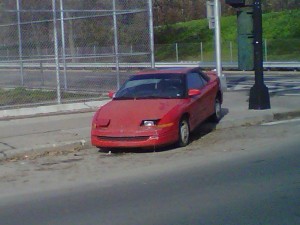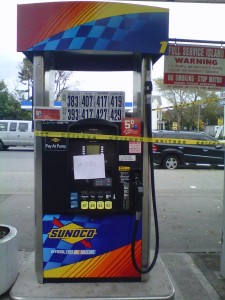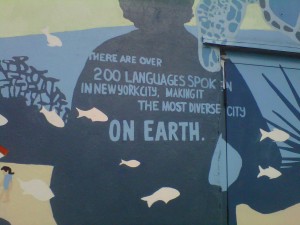A whimsical, wishful thought about human nature and change!
What could You do with 42 Billion Dollars?
It would be like winning the biggest lottery ever! You’d never have to worry about a thing. Why you could live anywhere you wanted safely and securely. Even if it was on  the edge of a cliff – fiscal or otherwise. You could build the safest support around to stay safely perched.
the edge of a cliff – fiscal or otherwise. You could build the safest support around to stay safely perched.
Unless of course Sandy-esque storms strike and sweep you into the void below.
Of course you could afford to build a new house – anywhere. On a beach, or, on your own island in the South Pacific.
Unless that island drowns by rising sea levels – or a Sandy-esque surge.

Climate change will change our sense of security.
I have to mention Sandy since only a month ago NYC was hit by the costliest storm to hit this island. It will cost NYC $42 Billion to rebuild – well, actually it will cost FEMA that amount.
Global warming is REALLY expensive!
And like the song goes: if climate change can make it here (NYC) , it can make it anywhere.”
Well, close enough. Post-Sandy, there was real acknowledgement – by politicians and skeptics alike – of the real and present danger of global warming courtesy of rising carbon-dioxide levels in the atmosphere.
So a month after this devastating storm, acknowledged to be ‘The New Normal’, global climate talks are being held in Doha Qatar.
http://www.washingtonpost.com/blogs/wonkblog/wp/2012/11/28/understanding-the-doha-climate-talks-in-three-charts/ click here for the Washington Post’s sum of the talks past and present.
Global leaders are discussing policies and actions to halt, reverse, and take action about our warming planet and its deleterious effects.
It’s been 15 years since the Kyoto Protocol and the first climate talks. Talk is just hot air. Hot air adds to global warming. And there has been lots of talk over the years.
Industrialization and ‘the good life’ has led to increased carbon dioxide emissions leading to to increased temperatures causing increased melting of the ice caps, and, rising sea levels.
And all of that leads to severe weather patterns like our blistering hot summer and catastrophic hurricanes.
Insult to injury: melting ice caps are releasing methane (aka as carbon-dioxide), increasing temperatures even more and accelerating the above process.
I somehow assumed this years climate talks would be front page news considering the extreme weather of this past year including draughts and heat, and Sandy.
I somehow assumed people would really care this year. But assumptions are as dangerous as not believing in climate change.
China is gearing up for action in 2030; the U.S. is poised for 2015.
This means potential for 3 more Sandy-esque storms to hit the Northeast – and we know New Yorker’s won’t stand for that. I mean, would YOU?
Three more years of sinking islands and drowning polar bears. Three more years

for carbon-dioxide levels to rise even further.
I continue to wonder why people don’t care and why these climate talks are buried beneath worries of the fiscal cliff.
I think I have the solution to get people interested and involved and to take action:
We need a REALITY SHOW!
Imagine: THE BIGGEST carbon-emission LOSER.
People LOVE that show and for good reason.
This would be a chance for all of us to lighten our load since the whole planet is CO2 pudgy. No, let’s be honest: CO2 OBESE.
And it’s dangerous and ugly. People can’t breathe, can’t move.

So here’s how The Biggest carbon-emission Loser would work:
Each week on a televised broadcast: Nations, represented by Presidents, Ministers, Kings, or Princes would weigh the carbon-dioxide output of their citizens and their actions.
Imagine Obama competing with Angela Merkel’s EU (for starters).
During the intervening weeks, citizens would take action in their countries to reduce CO2 to help their nations win. Well lose first to win big!
Each and every one of us would have to:
- Consume less stuff, energy, gas
- Exercise responsible use of water and electricity
- Work out ways to support responsible manufacturing and safe energy production
We can do this – we can win!
And for those of us in the U.S. we can whup some EU butt by putting our good ‘ole Yankee ingenuity to good use.
So what will you do to reduce our CO2 emissions?
Will you get your community together to reduce and reuse?
Carpool?
Rethink holiday gifts or at least skip the wrapping paper? Re-gift?
Turn off the water?
Let’s start a revolution.

We can all be reality TV stars! Let’s get this on screens around the world!
Share your thoughts!
























